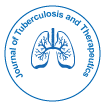Multi Drug Resistant Tuberculosis of (15-60 Years) of Far-Western Region of Nepal
Received Date: Jul 03, 2017 / Accepted Date: Nov 13, 2017 / Published Date: Nov 20, 2017
Abstract
Background: Multidrug-Resistant Tuberculosis (MDR-TB) is tuberculosis that does not respond to Isoniazid and Rifampicin and remains one of the major public health concerns in the South-East Asia Region of World Health Organization.
Methodology: A descriptive analytical design with an unmatched case-control study was conducted in Kailali district of Far-Western Nepal among purposively selected 50 cases and 50 controls.
Results: Service, business, migrant labor and house wife were found three times more at risk of having MDR-TB than those who were involved in agriculture (OR 3.38; 95% CI 1.12-10.22). People who live in hill/mountain were also found three times more at risk than those who lives in Terai (OR 3.75; 95% CI 1.19-11.86). Similarly, people who had pulmonary tuberculosis were found eleven times more likely to have MDR-TB than those who had extrapulmonary tuberculosis (OR 11.39; 95% CI 1.10 to-117.3).
Conclusion: The study revealed that there was significant association between occupation, place of residence, type of tuberculosis and MDR-TB.
Keywords: Multidrug-resistant tuberculosis; HIV; Pulmonary tuberculosis; Risk factors
Citation: Thakurathi B, Giri R, Yadav DK, Khana V, Gurung SC, et al. (2017) Multi Drug Resistant Tuberculosis of (15-60 Years) of Far-Western Region of Nepal. J Tuberc Ther 2: 106.
Copyright: © 2017 Thakurathi B, et al. This is an open-access article distributed under the terms of the Creative Commons Attribution License, which permits unrestricted use, distribution, and reproduction in any medium, provided the original author and source are credited.
Share This Article
Open Access Journals
Article Usage
- Total views: 3993
- [From(publication date): 0-2017 - Mar 11, 2025]
- Breakdown by view type
- HTML page views: 3246
- PDF downloads: 747
